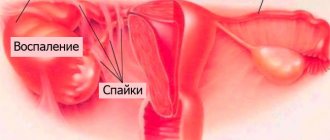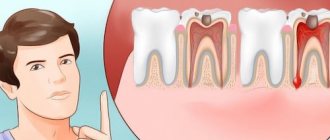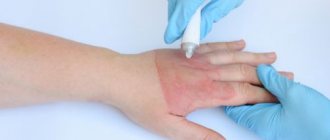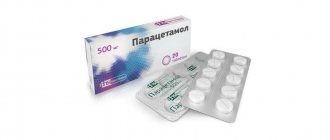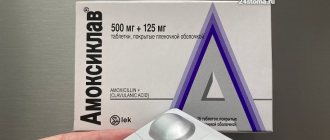Every person has experienced pain at least once in their life. Everyone knows how inopportune she always is, how she unsettles her and ruins her plans. Everyone is always looking for a way to end this nightmare as quickly as possible. And each person has his own proven remedy. In fact, some painkillers are not entirely harmless. Therefore, you should not grab the first available remedy for pain. It's better to listen to specialists.
Top 10 most effective painkillers.
November 17, 2022
10028
4.9
2
Content
- How to choose pain pills
- The best painkillers
- Nonsteroidal anti-inflammatory drugs for pain
- Aspirin Express
- Nurofen Forte
- Dexonal
- Ibuprofen
- Painkillers antispasmodics
- No-Shpa
- Drotaverine
- Spasmonet
- Combination pain relievers
- Pentalgin
- Solpadeine Fast
- Safiston
Analgesics (painkillers) help relieve any pain in the body. You can buy mild painkillers at any pharmacy without a prescription, but strong (narcotic) drugs are sold only by prescription and are prescribed by a doctor, who determines the required dosage.
We have compiled a list of the most effective over-the-counter pain pills based on doctor recommendations and patient reviews. Our rating includes non-steroidal anti-inflammatory drugs, antispasmodics and drugs with combined effects. Analgesics help reduce headaches, dental, muscle, joint and other types of pain. If you decide to buy a painkiller, be sure to pay attention to the popularity of the company that produces the drug, because only well-known pharmaceutical manufacturers carefully monitor the quality and safety of their products.
Non-narcotic painkillers
The most popular drug Aspirin belongs to this group. It contains acetylsalicylic acid. In addition to relieving pain, it lowers temperature and thins the blood. Therefore, it should not be taken by persons with reduced blood clotting. It is also contraindicated for damage to the gastric and intestinal mucosa. The drug may cause bleeding.
It is also not given to children under fifteen years of age.
There are analogues of aspirin:
- Upsarin Upsa;
- Aspirin Cardio;
- Aspicor;
- Citramon;
- Thrombo-ass;
- Cardio-magnyl;
- Anopyrine.
Paracetamol is also included in the group of non-narcotic painkillers. It is the most harmless of the drugs in this group. It is even prescribed to pregnant women and children. But it should not be taken uncontrollably, because it has a negative effect on the liver.
There are analogues of Paracetamol:
- Panadol;
- Daleron;
- Solpadeine;
- Panadol Extra;
- Trigan-D;
- Coldrex;
- Sanidol;
- Perfalgan;
- Meksalen;
- Medipirin;
- Panadol active.
The most common painkiller is Ibuprofen. It effectively relieves pain, but is classified as an NSAID, so it should not be taken by patients with gastrointestinal ulcers or people with reduced blood clotting.
Ibuprofen analogues:
- Nurofen;
- Ibusan;
- Moment;
- Ibufen;
- Advil;
- Pedea;
- Burana;
- Ibuklin Junior.
Drotaverine is a well-known antispasmodic. It is even used during childbirth. Relieves various spasms. It is not prescribed to children under six years of age, or to nursing mothers. Otherwise the medicine is called No-shpa.
Ketarolac is the most powerful drug in this group. It is taken for severe toothaches and conditions after operations. Not prescribed to children under sixteen years of age, nursing mothers, or persons with kidney, heart, or stomach diseases.
Diclofenac is a non-steroidal anti-inflammatory drug. Relieves pain from arthrosis, arthritis, toothache.
Analogues:
- Voltaren;
- Ortofen;
- Dorosan;
- Orthoflex;
- Naklofen.
Oxycams relieve pain in joint diseases. Not prescribed for children, stomach ulcers, or kidney disease.
How to choose pain pills
If you decide to buy a painkiller, be sure to read our recommendations.
- The first thing you need to pay attention to when you buy pain pills is the age limit.
This is especially important if you are buying the drug for a child. If you do not follow this rule, there may be health problems due to inappropriate concentration of the active substance. - To relieve, for example, a headache or toothache, choose narrowly targeted drugs.
If pain occurs in different parts of the body, it is better to buy
complex action products. - determine how safe a painkiller is
for your health by studying the list of its contraindications and side effects. The smaller it is, the better, of course. - It is desirable that pain tablets contain an average concentration of the active substance.
If there is little active ingredient, you will have to take the drug more often. If, on the contrary, there is a lot, you need to carefully monitor so as not to overdo it with the dosage. - You don’t need to be guided only by the speed of action of painkillers.
Typically, drugs that quickly relieve pain do not work for long and have a long list of contraindications. - It is also important that pain pills do not contain many active ingredients
- then there will be a minimum of negative reactions. Several components are allowed only in broad-spectrum preparations. - Try to choose a product from a well-known pharmaceutical manufacturer
- this way you will minimize the risks of health problems. - Analgesics are needed only in extreme cases; do not take them at the slightest pain.
Before buying a painkiller, study information about it on the Internet, and most importantly,
consult your doctor.
About pain
Pain is an extremely unpleasant sensation. Pain as a phenomenon cannot be limited only to the concepts of an organic or functional disorder that is located at the site of injury.
Pain affects not only the location of the lesion, but also the activity of the body as a whole. This is confirmed by numerous studies on the consequences of such discomfort.
Pain is the most common and at the same time the most dangerous symptom that can occur in a sick person.
Pain is an integrative function of the body, which is characterized by psychological and emotional changes. It is she who is responsible for mobilizing the body’s defense systems from the effects of negative factors.
There are two types of pain:
- acute;
- chronic.
Acute pain is a reaction to an external stimulus. The reaction manifests itself due to the delivery of an impulse through nerve channels to the brain. It is transmitted, and then, as it were, returns to the source of the lesion.
Acute pain appears due to damage in the form of fractures of any bone, muscle or ligament sprains, injuries, caries, as well as various diseases of the internal organs. As a rule, this type of pain is treated well with painkillers (analgesics).
Chronic pain is more complex, and the causes of its occurrence need to be carefully studied. As a rule, this type of pain indicates difficulties in treating an injury or disease. It always drags on for more than six months. There is a connection between chronic pain and serious diseases, such as:
The best painkillers
Our list contains only the most proven and effective painkillers from well-known manufacturers. This means that the drugs presented have a minimum of side effects and contraindications and are as safe as possible for health. These pain pills are often prescribed by doctors, and patients say they are effective.
Painkillers must be prescribed by a doctor
Photos from open sources
Mechanism of action of painkillers
When tissue damage or inflammation occurs, a signal travels along the nerve endings to the brain. In the damaged area, irritation of the nerve endings occurs. As a result of muscle contraction, a spasm occurs.
Painkillers act as follows:
- inhibit nerve impulses that transmit pain;
- soothe irritated nerve endings;
- relieve muscle spasms.
Depending on the type of pain, painkillers are used.
Aspirin Express
These effervescent pain relief tablets contain 500 mg of acetylsalicylic acid. After taking this pill, the headache will go away within 15 minutes. "Aspirin Express" relieves pain, relieves inflammation and works as an antipyretic. The drug is prescribed to patients over 25 years of age, and it is important that the person does not have diseases of the gastrointestinal tract, kidneys or liver. Aspirin Express is prohibited for pregnant and lactating women. For migraines, you need to dissolve two effervescent tablets in a glass of water. 1 tablet – 1 g (you can take no more than 3 g of the drug per day). If you exceed the permissible dosage of these pain pills, side effects such as dizziness, nausea, vomiting, and the development of an allergic reaction are possible. You should not take Aspirin Express for more than three days (without consulting your doctor). The drug has a complex effect, a quick effect, a convenient release form, and no side effects. You can read the contraindications in the instructions.
Aspirin Express
Bayer AG, Germany
Antipyretic, analgesic, anti-inflammatory, antiplatelet agent, NSAID for the symptomatic relief of headache, toothache, sore throat, menstrual pain, muscle and joint pain, back pain;
- increased body temperature during colds and other infectious and inflammatory diseases (in adults and children over 15 years of age). from 5
5.0 1 review
181
- Like
- Write a review
How to give an intramuscular injection correctly
When choosing a place to administer an injection, the following places are searched:
- where injections have already been given (there are seals there);
- hemangiomas;
- moles;
- prominent capillaries.
It is prohibited to inject into such places.
To make an intramuscular injection without harming yourself, you need to perform the following manipulations.
- Wash your hands with laundry or any other soap. This is important because your hands, and especially the area under your nails, are where the most germs accumulate. Girls who have long manicured nails need to wash the area under them with a special brush.
- Prepare three cotton pads.
- Moisten the first cotton pad with an antiseptic and wipe your hands as thoroughly as possible.
- Take out the package containing the syringe. Open it. Be careful not to touch the needle during assembly.
- Take an ampoule with injection solution. Using a second cotton pad, which is also moistened with an antiseptic, take the top of the ampoule and break it. You can do it differently - if you have a special file in the kit, use it to file down the top of the ampoule.
- Remove the assembled syringe from the package. Remove the cap from the needle. Insert the needle into the ampoule itself (you must try not to touch the walls and bottom). In this way, draw up the medicine, and then get rid of the air inside the syringe by gently pressing the piston.
- Take a third cotton pad. They need to clean the area where the injection will be given. The place can be marked in advance with iodine - this will make it easier to get where you need to go.
- The hand needs to be pulled back, but not much. Then the injection is given.
- At the end of the procedure, remove the needle from the injection site. Then take a cotton pad and press it harder to the needle insertion site. Hold for a minute.
Each time you need to change the injection site to avoid the formation of seals. It is recommended to paint the mesh with iodine - this way you can achieve disinfection and warm up the area.
It is worth noting a separate case in this instruction. If the medicine is in powder form, one additional step is required. In addition to the fact that the ampoule with the solution needs to be opened, the protective foil removed, and the cap disinfected, you need to add the medicine in powder form to the liquid and mix until smooth. Only after this can the resulting drug be injected into the syringe. Then proceed in accordance with the instructions.
Nurofen Forte
This pain reliever is the best in its category. Nurofen Forte tablets help with muscle, headache, toothache and joint pain. The drug has very few contraindications due to the content of a small amount of active ingredients. Nurofen Forte is easy to use and has virtually no side effects. Tablets are prescribed from the age of 12; you can take the drug three times a day, one tablet (at equal intervals of 6 hours). You can be treated with Nurofen Forte for no longer than two to three days, then you need to take a week break. Tablets have a wide spectrum of action.
Nurofen Forte
Reckitt Benckiser Healthcare International Ltd, UK
NSAIDs to eliminate: Headache;
migraine; toothache; algodismenorrhea; neuralgia; backache; myalgia; rheumatic pains; fever with influenza and ARVI. from 9
5.0 1 review
644
- Like
- Write a review
Dexonal
Although these pain relief pills are relatively expensive, they make up for this with their effectiveness and safety. This is a drug with a narrow spectrum of action; Dexonal is usually prescribed for pain in the bones and muscles. The tablets have quite a few contraindications, since they contain many components. In addition, the painkiller has strict age restrictions. The drug is prohibited for patients under 18 years of age. Side effects are rare if the required dosage is followed exactly. If the rules for taking Dexonal are not followed, side effects such as disruption of the gastrointestinal tract and cardiovascular system are possible. Painkiller tablets are easy to use, have convenient packaging, are most effective, but are expensive.
Dexonal
Obolenskoye (OBL Pharm), Russia
The drug Dexonal is a non-steroidal anti-inflammatory drug.
It has analgesic, anti-inflammatory and antipyretic effects. The analgesic effect occurs 30 minutes after taking the drug Dexonal orally, the duration of the therapeutic effect reaches 4–6 hours from 220
5.0 7 reviews
998
- Like
- Write a review
How to relieve pain: a description of the stages of a three-step scheme
Low pain therapy
The patient is prescribed non-opioid analgesics: NSAIDs (Ibuprofen, Diclofenac, Ketoprofen, etc.), Paracetamol. When choosing a drug, the toxicity to the liver and kidneys inherent in all non-opioid analgesics, as well as the gastric toxicity of non-selective NSAIDs, and the risks from the cardiovascular system when using selective NSAIDs are taken into account. It is advisable to accompany the use of first-line drugs with adjuvant and symptomatic therapy: ion pump blockers, corticosteroids, antispasmodics, benzodiazepines, antihistamines, etc.
Therapy for “moderate” pain
The oral route of drug administration is preferred if the patient can take the drugs by mouth. For patients with mild to moderate pain in whom adequate pain control is not achieved by regular oral paracetamol or non-steroidal anti-inflammatory drugs, the addition of an opioid analgesic may provide effective pain relief without adverse side effects. As an alternative, low-dose opioid analgesics (eg, morphine, TTC fentanyl) may be used.
Therapy for “severe” pain
If the pain is intense and an opioid analgesic in combination with NSAIDs or Paracetamol is ineffective, therapy with strong opioid analgesics should be started. If they were prescribed for moderate pain, you need to increase the dose of the drug until it is effective. Registered prolonged forms of strong opioid analgesics in our country and used in our clinic are: morphine in capsules and tablets, TTC fentanyl.
Book a consultation 24 hours a day
+7+7+78
Ibuprofen
The active ingredient in these pain pills is ibuprofen, and its low concentration in the drug is excellent for treating pain in those who cannot afford an expensive drug. But the cheapness of Ibuprofen does not mean that it is ineffective. On the contrary, the tablets relieve pain well and begin to act as quickly as possible. Other advantages include minimal likelihood of overdose and ease of use. Ibuprofen is prohibited for children under 6 years of age. It is advisable to take the medicine after consulting a doctor in order to take into account all possible contraindications.
Ibuprofen
OJSC Pharmstandard-Leksredstva, Russia; Slavyanskaya Pharmacy, Russia; Rafarma, Russia; CJSC VERTEX, Russia; PJSC "Biokhimik", Russia; EKOlab, Russia; "Moskhimfarmpreparaty" named after. N. A. Semashko, Russia; Belmedpreparaty, Belarus; PJSC "Biosintez", Russia; Borisov medical plant drugs, Belarus; Sintez OJSC, Russia; JSC "Tatkhimfarmpreparaty", Russia; Novopharm-Biosintez LLC, Ukraine
Symptomatic treatment: - tension headaches and migraines;
- joint, muscle pain, - pain in the back, lower back, radiculitis; - pain when ligaments are damaged; - toothache; - painful menstruation; — febrile conditions during colds, flu; - rheumatoid arthritis, osteoarthritis. NSAIDs are intended for symptomatic therapy, reducing pain and inflammation at the time of use, but do not affect the progression of the disease. from 16
4.5 2 reviews
1604
- Like
- Write a review
What is the reason for failure in pain treatment?
Due to the lack of specialized training in pain management, even among oncologists, and due to the perception of cancer as an incurable disease, even medical specialists often do not realize that cancer pain can be managed.
In 80–90% of patients, pain can be completely eliminated, and in the rest, its intensity can be significantly reduced. To do this, the doctor needs to take into account each of the sources and mechanisms of pain to select adequate pain therapy for cancer.
In clinical practice, we constantly encounter typical errors in the treatment of pain: unreasonably early prescription of narcotic analgesics, use of excessive dosages of drugs, non-compliance with the prescription regimen of analgesics.
No-Shpa
Typically, “No-Shpu” is prescribed for spasms of smooth muscles of the gastrointestinal tract, spasms of the biliary and urinary tracts, headaches, and painful menstruation. This drug for pain is one of the most popular because it is inexpensive, most effective and quickly begins to act. In addition, No-Shpa has few contraindications and the risk of overdose. "No-Shpa" contains six components that are safe for health, which very rarely cause side effects. Painkillers are prescribed for adults and children over 6 years of age.
No-shpa
Chinoin, Hungary
Antispasmodic drug used for: Spasms of smooth muscles in diseases of the biliary tract: cholecystolithiasis, cholangiolithiasis, cholecystitis, pericholecystitis, cholangitis, papillitis;
- spasms of smooth muscles of the urinary tract: nephrolithiasis, urethrolithiasis, pyelitis, cystitis, bladder spasms. As an auxiliary therapy: - for spasms of smooth muscles of the gastrointestinal tract: peptic ulcer of the stomach and duodenum, gastritis, spasms of the cardia and pylorus, enteritis, colitis, spastic colitis with constipation and irritable bowel syndrome with flatulence; - for tension headaches; - for dysmenorrhea (menstrual pain). from 193
4.5 2 reviews
1752
- Like
- Write a review
Composition and effects
The tablets contained three active substances. In addition, auxiliary substances are used for production to create the desired shape and impart a certain taste.
The therapeutic effect is provided by the following components:
- Metamizole sodium, which is a pyrazolone derivative. The substance is characterized by pronounced analgesic, antipyretic and antispasmodic properties.
- Pitophenone hydrochloride, which has a direct myotropic effect on smooth muscles, against the background of which it relaxes and spasms are relieved.
- Phenpiverinium bromide, which has an anticholinergic effect and has an antispasmodic effect on smooth muscles.
After taking the drug orally, the initial positive result is observed after approximately twenty minutes. Maximum therapeutic effect after four hours. Additionally, the combination of active components has an antipyretic effect.
The active ingredients are quickly absorbed after administration in the gastrointestinal tract. The drug undergoes biological transformation in the human body and, after reactions, new metabolites are formed in the intestinal wall. They bind to plasma proteins up to 60%, which explains the high effectiveness of the product.
Drotaverine
Perhaps one of the most inexpensive and effective antispasmodics prescribed for pain in the gastrointestinal tract and spasms of the smooth muscles of internal organs. "Drotaverine" has very few contraindications: childhood, intolerance to the drug components, severe liver and kidney failure. Drotaverine contains a low concentration of the active substance, so the risk of side effects is practically eliminated. Due to its low cost, this painkiller is available to everyone. Among the disadvantages is that sometimes Drotaverine is difficult to find in pharmacies.
Drotaverine
Planet Organics; Borisov medical plant drugs, Belarus; NPC Pharmzashchita, Russia; PJSC "Biosintez", Russia; Ozon LLC, Russia; FSUE "Armavir Biofactory", Russia; PJSC "Biokhimik", Russia; Deco, Russia; JSC Dalkhimfarm, Russia; Novosibkhimpharm OJSC, Russia; Vifitech/Vilar, Russia; Update, Russia; Sintez OJSC, Russia; JSC PharmProject, Russia; PJSC Valenta Pharm, Russia; "Moskhimfarmpreparaty" named after. N. A. Semashko, Russia; JLLC "Lekpharm", Belarus; Medisorb, Russia; Obolensk pharmaceutical enterprise, Russia; Solopharm, Grotex LLC, Russia; Ellara MC, Russia
Spasm of smooth muscles of the urinary and biliary organs (renal colic, pyelitis, tenesmus, biliary colic, intestinal colic, dyskinesia of the biliary tract and gallbladder of the hyperkinetic type, cholecystitis, postcholecystectomy syndrome).
Spasm of smooth muscles of the gastrointestinal tract (usually as part of combination therapy): pylorospasm, gastroduodenitis, gastric and duodenal ulcers, spastic constipation, spastic colitis, proctitis. Tensor headache. Dysmenorrhea, threatened miscarriage, threatened premature birth, postpartum contractions. When conducting some instrumental studies, cholecystography. from 12
5.0 1 review
944
- Like
- Write a review
About drugs
Any physical suffering leads to a person’s desire to get rid of it as soon as possible. For this reason, the patient’s course is a nearby pharmacy, where he looks for a medicine that can quickly and effectively relieve this kind of torment. But he faces the problem of a wide range of products. Today there are so many medications that sometimes it takes a lot of time to find the right one.
Medicines are mainly divided into two groups:
- non-narcotic;
- narcotic.
The latter include morphine and codeine. They are generally considered opioid drugs.
Medicines are the main helpers in the fight against discomfort
Narcotic types of drugs can be found in pharmacies under the following names:
- "Ethylmorphine";
- "Nabulfin";
- "Omnopon";
- "Morphilong";
- "Promedol";
- "Tramadol".
Medicines are most often produced in the following forms:
- tinctures;
- ointments;
- gels;
- solutions for injections;
- plasters.
The most convenient form for medications is tablets. Their advantages are the following:
- ease of use;
- no reactions from the body (no redness or itching);
- no need for syringes;
- It is not necessary to ask for help from qualified personnel (than when administering injections).
The anesthesia procedure is an obligatory part of the treatment. This is how partial or complete recovery from pain occurs. Its implementation depends on the cause of the pain and its severity. If the cause is any disease, then pain relief during complex stages of the disease is vital. If the tablets are ineffective, injections are prescribed - intramuscular or intravenous.
Analgesics help make life easier
So, in medicine, there are many different types of pain medications.
Spasmonet
This anesthetic drug relieves spasms of the smooth muscles of internal organs and reduces pain during spasms of peripheral arteries. "Spasmonet" has a balanced composition: one main active ingredient and several minor ones. Thanks to the right combination of active ingredients, these pain relief pills are very effective and start working quickly. When taking Spazmonet, any side effects very rarely occur, but if you do not adhere to the recommended dosage, dizziness, nausea, allergies, and decreased blood pressure may occur.
Spasmonet
KRKA-RUS, Russia; KRKA (KRKA), Slovenia
Spasmonet is a drug from the group of antispasmodics that are used in the treatment of gastrointestinal disorders, as well as in gynecology.
from 60
5.0 1 review
459
- Like
- Write a review
When buying pain pills, pay attention to the manufacturer’s reputability
Photos from open sources
Rules for taking painkillers
Painful sensations can be different: sudden and sharp, aching or pressing, increasing or paroxysmal. It is important to remain calm and try to determine what exactly is causing the discomfort.
In some cases, the body is able to overcome mild pain on its own. And with minor discomfort, you do not need to immediately resort to painkillers, so that the body does not forget how to cope with pain on its own. Otherwise, any type of pain will have to be treated with pills, which will be harmful to health.
Severe pain that occurs regularly and is difficult to treat on your own requires seeking medical help.
Basic rules for using pain medications:
- Take on time. At the first symptoms, take a tablet, as the effect of the medicine will occur only after 20-30 minutes. For example, if you have a toothache, you shouldn’t wait for it to get worse. For migraines, it is important to take painkillers at the onset of an attack.
- For elderly people, it is better to replace the tablet form with a local drug. For example, for pain in the knees or elbows, it is better to use a gel, ointment or a special patch.
- Avoid alcohol. While taking analgesics, alcoholic drinks are prohibited, as they can enhance or weaken the effect of the drug. For hangover syndrome, Paracetamol is indicated, which does not irritate the stomach.
- Do not take on an empty stomach. To protect the mucous membrane, it is advisable to drink at least kefir, if the instructions do not provide for use on an empty stomach. Take the tablet properly with warm water or tea in sufficient quantities. It is better when the tablet enters the stomach well moistened.
- Do not divide the tablet in half. A reduced dose will not have an effect, and a damaged coating will not protect the stomach from irritation and the main active ingredient will not reach the intestines.
- Strictly follow the dosage both for one application and per day, as indicated in the instructions. Exceeding will lead to side effects and worsening of the condition. As a rule, more than two tablets at a time are not allowed. Also take into account the need for a break between doses, the duration of which is indicated in the instructions.
- Do not combine drugs from different groups of analgesics. Do not take analgin, aspirin, ibuprofen, paracetamol and piroxicam at the same time. As a result, the effect will not improve, and a negative effect may manifest itself in the form of nausea, weakness, dizziness, and respiratory failure. It is allowed to alternate doses, but do not take two different tablets at once.
- Do not take the same drug often. To avoid addiction and loss of effect from use. Dependence develops especially quickly on opioid analgesics.
- Do not use expired medications. Expired medications are deadly.
Pentalgin
These painkillers are inexpensive and are usually prescribed for headaches, dental pain, muscle pain, joint pain, and other types of pain. The drug helps with radiculitis and menstrual pain. The tablets begin to act 20 minutes after administration, and the analgesic effect lasts 4-6 hours. Pentalgin has very few contraindications; patients over 18 years of age can take it (usually one tablet three times a day). If you exceed the recommended dosage, side effects may develop, and if you reduce it, the effectiveness of the drug will also decrease. In general, Pentalgin is as safe as possible, provides excellent pain relief, and is affordable.
Pentalgin
OJSC Pharmstandard-Leksredstva, Russia
— pain syndrome of various origins, incl.
pain in joints, muscles, radiculitis, algodismenorrhea, neuralgia, toothache, headache (including those caused by cerebral vasospasm); — pain syndrome associated with spasm of smooth muscles, incl. for chronic cholecystitis, cholelithiasis, postcholecystectomy syndrome, renal colic; — post-traumatic and postoperative pain syndrome, incl. accompanied by inflammation; - colds accompanied by febrile syndrome (as symptomatic therapy). from 57
930
- Like
- Write a review
Three-stage pain correction system
The main method of treating pain in oncology is drug therapy. In the practice of Euroonko, a three-stage pain relief system of non-narcotic and narcotic analgesics is used, which allows you to effectively relieve pain and keep it under control. We take into account the recommendations of the World Institute of Pain (FIPP WIP, USA), the European Federation of the International Association for the Study of Pain (EF IASP).
The method consists of sequential use of analgesics of increasing strength in combination with adjuvant therapy as the pain intensity increases. An important principle is to begin pharmacotherapy immediately when the first signs of pain appear, before a complex chain reaction develops that leads to chronic pain syndrome. The transition to a stronger painkiller is made when all the drugs of the previous step are ineffective in their maximum dosages.
Solpadeine Fast
These painkillers act quickly, are as safe and effective as possible, and are suitable for relieving various types of pain. Solpadeine Fast contains paracetamol and caffeine. The drug is prescribed for headaches, toothaches, migraines, neuralgia, rheumatic and muscle pain, painful periods, as well as in the complex treatment of ARVI and influenza. These soluble tablets are easily absorbed and provide an immediate positive effect. The drug is prohibited for children under 12 years of age, as well as persons with hypertension, hypersensitivity to the components of Solpadeina Fast, and people with renal and liver failure. This painkiller has minimal contraindications, a quick effect, but is overpriced.
Solpadeine Fast
GlaxoSmithKline, France
- headache;
- migraine; - toothache; - neuralgia; - muscle and rheumatic pain; - painful menstruation; - a sore throat; - to reduce elevated body temperature and symptomatic treatment of colds and flu. from 77
5.0 1 review
175
- Like
- Write a review
Safiston
These tablets are prescribed for mild and moderate dental pain, headaches, migraines, arthralgia, myalgia, pain during menstruation, as well as in the complex therapy of acute respiratory viral infections and influenza. Safiston contains paracetamol, caffeine and propyphenazone. The drug is suitable for adults and children over 12 years of age. You should take no more than 3 tablets of painkiller per day (an hour or two after meals). Safiston should not be taken for more than five days without medical supervision. The drug relieves pain and reduces temperature an hour after administration, and its positive effect lasts about 6 hours. If you exceed the dosage of the drug, skin rash, nausea and vomiting, dizziness, and sleep disturbances are possible. Contraindications to taking these pain pills include pregnancy and breastfeeding, cardiovascular diseases, gastrointestinal, liver and kidney diseases. “Safiston” perfectly relieves pain, the effect of taking the drug lasts a long time, long-term use of the drug is possible (after consultation with a doctor), even teenagers can take it (after studying the list of contraindications), affordable cost. Cons – contraindications, which you should definitely read in the instructions.
Technologies for managing chronic pain syndromes
Euroonko is equipped with all the necessary equipment, including individual wearable pumps and devices for dosed administration. The clinic has the licenses and permits required by the legislation of the Russian Federation. We have a well-equipped pain therapy department staffed by physicians who specialize in pain medicine.
Use the quick links to find out about the pain relief method you are interested in:
- Pain relieving patches
- Spinal anesthesia
- Epidural anesthesia
- Catheterization techniques
- Neurolysis through the gastrointestinal tract using endosonography
- Injection of drugs into myofascial trigger points
- Fascial blocks and nerve and plexus blocks
- Radiofrequency ablation
- Neurosurgical interventions
- Patient controlled analgesia (PCA)
Pain relief for stage 4 cancer can significantly improve the patient’s quality of life, reduce, and in most cases prevent suffering. This helps to give the terminally ill patient additional time during which he can actively communicate with family and friends and spend the last days of his life without painful symptoms.
Pain relieving patches
This is a method of transdermal administration of the drug. The patch contains four layers: a protective polyester film, a reservoir with the active substance (for example, fentanyl), a membrane that adjusts the release intensity and an adhesive layer. The patch can be applied anywhere. Fentanyl is released gradually over 3 days. The effect begins within 12 hours; after removal, the concentration of the drug in the blood slowly decreases. The dosage may be different, it is selected individually. The patch is prescribed, as a rule, at the very beginning of the third stage of pain relief for oncology.
Spinal anesthesia
During spinal anesthesia, the medicine is injected into the spinal canal, subarachnoidally. This leads to a temporary “switching off” of tactile and pain sensitivity. The introduction requires a certain amount of experience from the doctor. Local anesthetics and opioid analgesics are used as pain relievers. The effect is long lasting and pronounced. Mainly used for surgical interventions, for acute, unbearable pain, it has a number of side effects on the cardiovascular and respiratory systems.
Sign up for a consultation now
Epidural anesthesia
A more gentle method compared to the previous one. The medicine is injected into the space where the spinal nerves form. The drugs are similar to spinal anesthesia. Epidural anesthesia is used for long-term pain relief when oral and parenteral methods of administration no longer provide results.
Catheterization techniques
Catheterization techniques allow for long-term, high-quality pain relief. The introduction of port systems into the epidural and subarachnoid space with the use of local, narcotic and adjuvant drugs allows for long-term relief from pain and reduces the use of other analgesics that have their own side effects.
Neurolysis through the gastrointestinal tract using endosonography
Neurolysis (neurolysis) is the process of destruction of the nociceptive (pain) nerve pathway.
One of the most effective methods is neurolysis of the celiac (solar) plexus
, which is located in the retroperitoneal space in the upper abdomen and innervates the abdominal organs: stomach, liver, biliary tract, pancreas, spleen, kidneys, adrenal glands, large and small intestines to the splenic flexure.
The analgesic is administered transgastrically - through the gastrointestinal tract; accuracy is ensured by endoscopic ultrasound control. Such methods of local anesthesia are used, for example, for pancreatic cancer with an effectiveness of up to 90%
. The analgesic effect can last for more than several months, while narcotic analgesics would have to be administered continuously using the classical method.
Injection of drugs into myofascial trigger points
Myofascial pain syndrome is expressed in muscle spasm and the appearance of painful lumps in tense muscles. These are called trigger points and are painful when pressed. Injections into the trigger zone relieve pain and improve mobility of the body area. The purpose of trigger point injections is to “break” the pain cycle of pain-spasm-pain. They successfully treat spasms of many muscle groups, especially in the arms, legs, lumbar region and neck, and head. Often used as adjunctive therapy for fibromyalgia and tension headaches.
Fascial blocks and nerve and plexus blocks
The same qualitative effect is provided by fascial blockades and blockades of nerves and plexuses.
A nerve or plexus block involves injecting a drug near the nerve that connects to the affected organ and causes pain. Peripheral blockade procedures are performed by experienced specialists using ultrasound navigation, which allows for more precise administration of the analgesic drug to the required location without affecting or damaging the nerve structures.
The use of hormonal drugs during blockade can eliminate pain for a long time, and repeated blockade can eliminate pain for several months
. Depending on the type of anesthetic, the procedure is carried out once a year, once every six months or every week. Another plus is the minimal number of negative consequences.
Radiofrequency ablation
This technology is based on selective thermocoagulation of certain nerves with special electrodes. The affected area is carefully controlled, allowing very small areas to be treated without damaging nearby motor and sensory nerves. Recovery after the procedure occurs very quickly and with almost no consequences, which allows the patient to return to normal life.
The procedure can be performed without hospitalization. Radiofrequency destruction gives a long-lasting effect that can last up to a year or more
.
The incidence of complications and side effects is very low. If the pain returns, treatment may be repeated.
Write to an oncologist
Patients with obvious mental disorders, with secondary pain or drug addiction are an unsuitable population for neurodestructive manipulations. Such patients may continue to complain of pain even if the procedure is successful. The patient must have a realistic view of the outcome of treatment. He must understand that the goal is to reduce pain, not completely eliminate it.
a diagnostic blockade is required.
. A good effect of a diagnostic blockade can predict a satisfactory result of neurodestruction. However, the same diagnostic block must be repeated at least one more time, even if the pain relief was significant, to negate the placebo effect.
If the result is not entirely clear, differential blocking should be used. In patients with widespread or multilocal pain, the outcome of treatment usually does not meet expectations. The patient should be aware that targeting one area may not achieve the desired effect and may require additional destruction to achieve maximum pain relief.
Euroonco doctors talk about radiofrequency ablation:
The procedure should be avoided on mixed nerves as it may result in loss of skin sensation and muscle weakness. Deafferentation pain can be aggravated by destruction of the damaged nerve. When pain is of central origin (spinal or higher), peripheral nerve destruction may cause an increase in pain perception due to the elimination of incoming stimulus. The best alternative in this case is neuroaugmentation with TENS or spinal cord stimulation.
Neurosurgical interventions
During the procedure, the neurosurgeon cuts the spinal or cranial nerve roots through which the nerve fibers pass. Thus, the brain is deprived of the ability to receive pain signals. Cutting the roots does not lead to loss of motor ability, but may complicate it.
Patient controlled analgesia (PCA)
This type of pain relief is based on a simple rule: the patient receives analgesics when he wants it. The scheme is based on individual perception of pain and the need to take analgesics. In European countries, RSA has been accepted as the standard for postoperative pain management. The method is simple and relatively safe
. However, patients must be thoroughly instructed.
PCA is most effective when using catheter methods (epidural, spinal anesthesia, nerve plexus block with catheter installation), as well as port systems, both venous and epidural and intrathecal.

